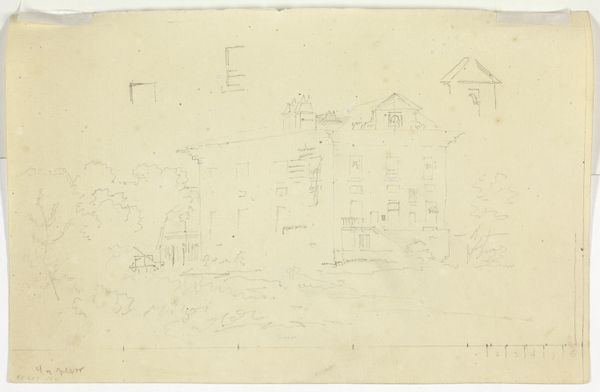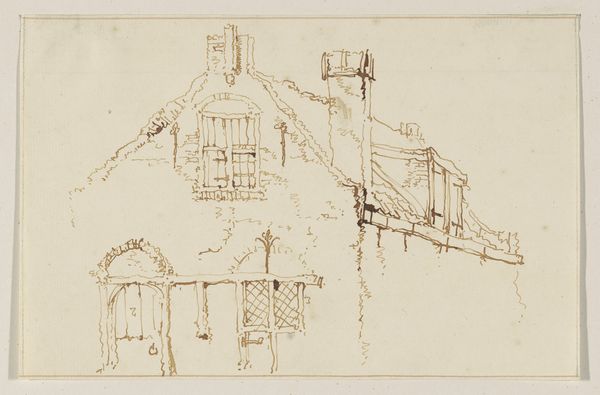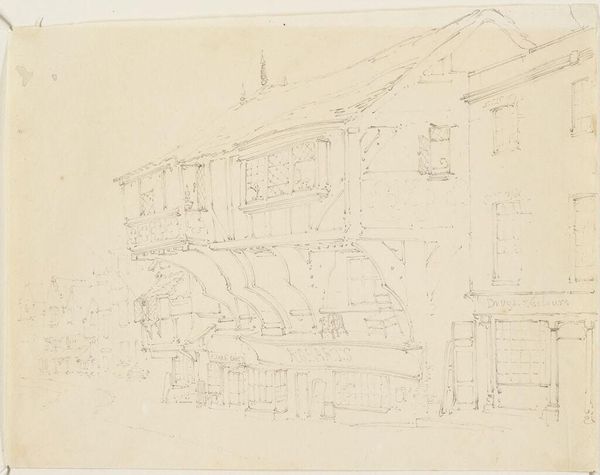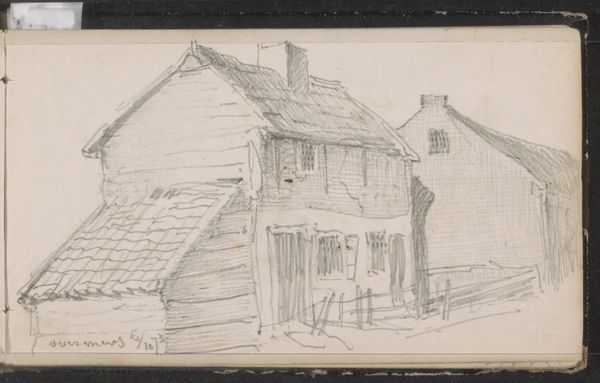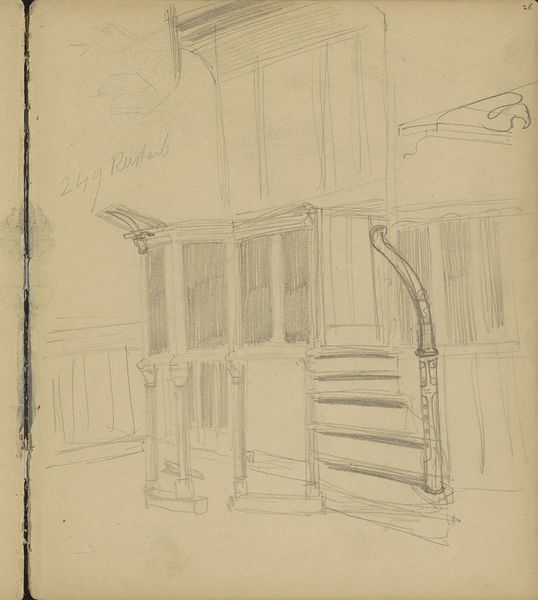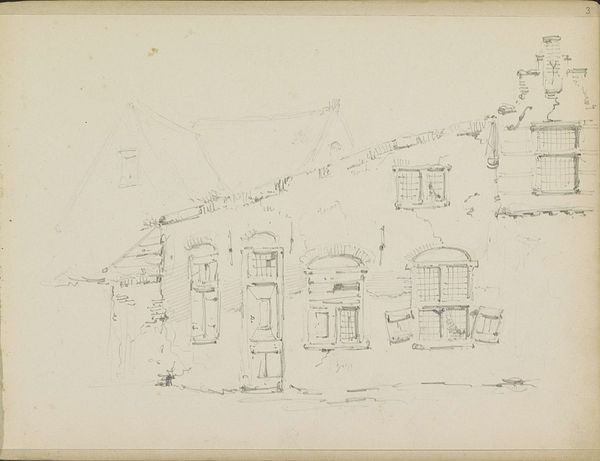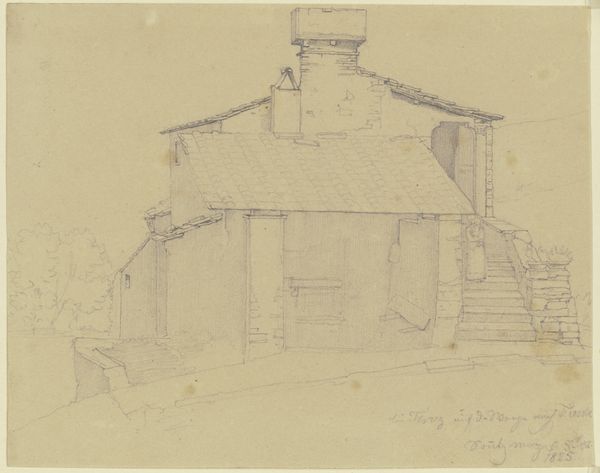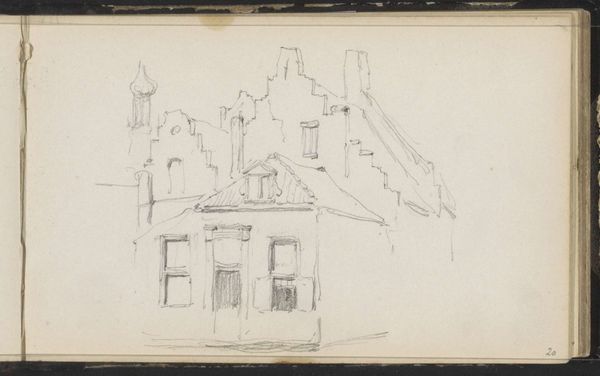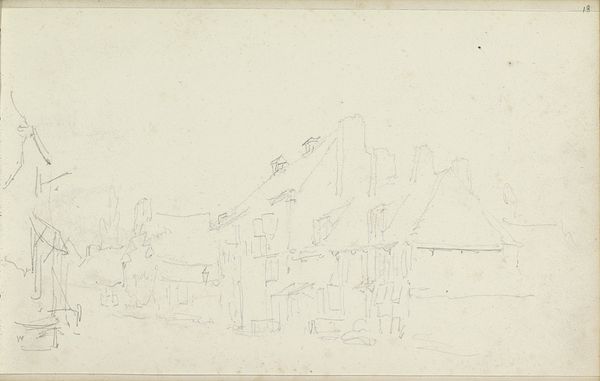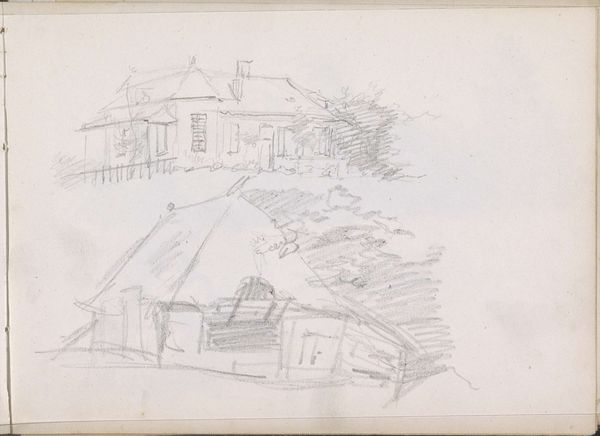
drawing, paper, pencil, architecture
#
drawing
#
landscape
#
paper
#
romanticism
#
pencil
#
architecture
#
realism
Copyright: Rijks Museum: Open Domain
Editor: This pencil drawing, "Huis met een werkplaats in Brotterode," by Johannes Tavenraat, created sometime between 1840 and 1848, feels very intimate and straightforward. It shows the workshop and home in a realistic way. How would you interpret Tavenraat's depiction here? Curator: The bare, realist rendering itself speaks volumes. What does the image evoke in terms of memory? Note how the vertical lines, like linguistic glyphs, define architecture and human experience, rising as pillars that connect us to a cultural heritage. Editor: The lines feel… fragile? They create the space but are almost tentative. It doesn't feel monumental, even if architecture often is. Curator: Exactly. Note the interplay of shelter and exposure, the blurring between the safety of the domestic sphere and the uncertainty of labor. Consider the weight these timber structures bear, not only physical but also the metaphorical weight of livelihood, ancestry, and social status passed down like inherited heirlooms. What stories reside in these architectural forms? Editor: I hadn't considered it that way, but the wood does have a textural, lived-in quality to it. Curator: These are images of places filled with significance. They operate on an individual, intimate scale but reveal layers of broader meaning: survival, aspiration, and communal existence rendered in subtle, lasting marks. And that feels fundamentally human. Editor: It's interesting how the simplicity almost amplifies the possible meanings within it. Thanks! Curator: It's the symbols we must learn to read. This understated aesthetic highlights the intrinsic, quietly resonating power of human narratives.
Comments
No comments
Be the first to comment and join the conversation on the ultimate creative platform.
